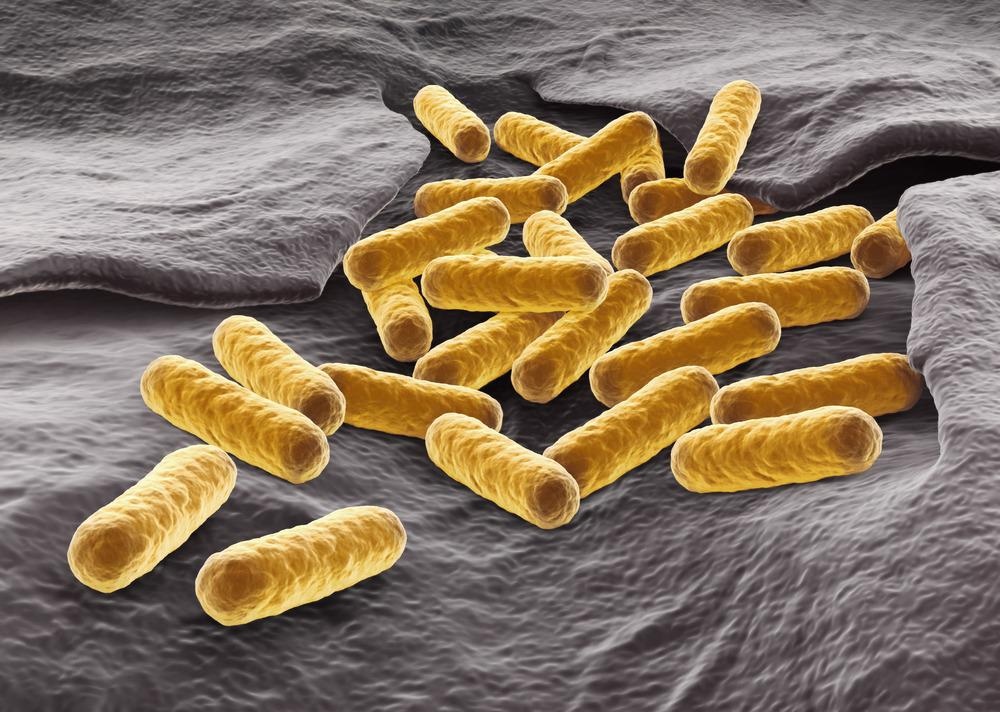Nanomaterials are a new paradigm for treating infectious diseases. The unique physicochemical properties of nanoparticles (NPs) enable researchers to design and develop various novel NP-based antimicrobial agents. New research published in the journal Scientific Reports focuses on the influence of size and surface charge of silver nanoparticles (AgNPs) on bactericidal activity.

Study: Five nanometer size highly positive silver nanoparticles are bactericidal targeting cell wall and adherent fimbriae expression. Image Credit: martynowi.cz/Shutterstock.com
The authors chose two different nanosized AgNPs with contrasting surface charges and evaluated their antibacterial activity on Escherichia coli (E. coli).
Antibiotic Resistance and Ag NPs
Hospital-acquired infections (HAIs), majorly from an intensive care unit (ICU), are detrimental to patients’ recovery and are mainly associated with multidrug-resistant organisms (MDROs) or antibiotic resistance (AR) in the United States (US).
The antibiotic resistance of gram-negative bacteria is due to the semi permeability of the cell wall to antibiotics. The most common gram-negative bacteria causing HAIs is E. coli. Its virulent strain, E. coli O1:K1:H7 (CN1018), increases its survival due to the expression of adherent fimbriae, causing inflammatogenic responses in a mouse model with urinary tract infection. On the other hand, bacteria lacking the fimbriae showed reduced survival rates in animal models and humans. Thus, antimicrobial agents that target the cell wall, adherent fimbriae, or both are essential.
AgNP is one of the engineered nanomaterials (ENMs) with a range of commercial applications. Nevertheless, previous studies precedented antimicrobial activity by AgNPs, yet their mechanism of action remains unclear.
Influence of Size and Charge on AgNP’s Bactericidal Activity
In the present study, the authors employed five nanometers-sized, positively charged amine (NH2)– AgNPs, 45 nanometer-sized negatively charged citrate– AgNPs, and silver ion (Ag+) solution as a control to understand the bactericidal MOA of AgNPs and elucidate the corresponding factors that influence the nano-bio interactions in E. coli.
The authors used this information to compare and determine the potential antimicrobial AgNPs. Further, they documented the potential phenotypic plasticity in E. coli because of Ag treatment. The results revealed that NH2–AgNPs are biocompatible with potent bactericidal effects than citrate–AgNPs.
This study proves the potential of small size, positively charged AgNPs as next-generation antibacterial agents to combat rising HAIs and ensure patient health and safety.
Characterization and Evaluation of Antibacterial Properties of AgNPs
Transmission electron microscopy (TEM) images of NH2–AgNPs revealed that they had a spherical crystalline structure with a diameter of 5.8 ± 2.8 nanometers. The +41.6 millivolts zeta potential was due to the positive amine group functionalization on AgNP’s surface. The amine coating of 0.5 to 1.5 nanometers thickness on AgNP’s surface enabled their stability via electrostatic repulsion.
Further, the TEM images of citrate–AgNPs revealed that they had a pseudospherical crystalline structure with a diameter of 44.8 ± 5.0 nanometers. The zeta potential of -30 millivolts was due to the negatively charged carboxyl groups on the surface of citrate–AgNPs. The citrate coating of 1.8 nanometers thickness on the AgNP surface enabled their electrostatic stabilization.
Dynamic light scattering (DLS) revealed the average hydrodynamic diameter (HDD) for NH2–AgNPs and citrate-AgNPs as 4.3 nanometers and 11 nanometers, respectively. Ultraviolet-visible spectrophotometry analysis revealed localized surface plasmon resonance (λmax) at 416.5 and 425 nanometers for NH2–AgNPs, and citrate–AgNPs, respectively.
Studies on antimicrobial activity of prepared AgNPs and Ag+ ions on E. coli cell culture showed that citrate–AgNPs at a concentration of 0.5 or 10 micrograms per milliliter, or Ag+ ions at a concentration of 0.5 micrograms per milliliter, showed growth over 72 hours confirmed by their optical density (OD600) greater than 0.6 absorbance unit.
However, exposing the E. coli culture to 10 micrograms per milliliters of NH2–AgNPs showed an initial acclimation followed by a gradual decline in the growth of E. coli cells, with complete nullification of the bacterial growth by 72 hours, thus confirming the NH2–AgNP’s bactericidal effect at the concentration of 10 micrograms per milliliters.
The authors suggest that the antibacterial effects of AgNPs are due to the interaction between the bacterial cell wall and NPs upon physical contact. The electrostatic attraction and small size of NH2–AgNPs aided in their competitive interactions with the bacterial cell wall over the citrate-AgNP counterpart. Additionally, the positive charge of NH2–AgNP added the advantage of high affinity to the bacterial cell wall, which further enhanced the interactions.
Conclusion
In this study, the attempt to design NPs with unique properties allowed the authors to prove the hypothesis that the small size and positive charge of AgNPs can help them become potential next-generation bactericidal agents. They demonstrated that 5-nanometer size and positive charge of NH2-AgNPs had a better inhibition effect on E. coli compared to 45-nanometer sized and negatively charged citrate-AgNPs.
The authors reported that NH2-AgNP’s bactericidal activity is due to its ability to inhibit adherent fimbriae expression. Finally, NH2-AgNPs proved to be a safe antibacterial candidate for human use, and they quenched oxidative stress response in lung epithelium and skin fibroblasts.
Reference
Pokhrel, L.R., Jacobs, Z.L., Dikin, D. et al. (2022) Five Nanometer Size Highly Positive Silver Nanoparticles Are Bactericidal Targeting Cell Wall and Adherent Fimbriae Expression. Sci Rep 12, 6729. https://www.nature.com/articles/s41598-022-10778-9
Disclaimer: The views expressed here are those of the author expressed in their private capacity and do not necessarily represent the views of AZoM.com Limited T/A AZoNetwork the owner and operator of this website. This disclaimer forms part of the Terms and conditions of use of this website.